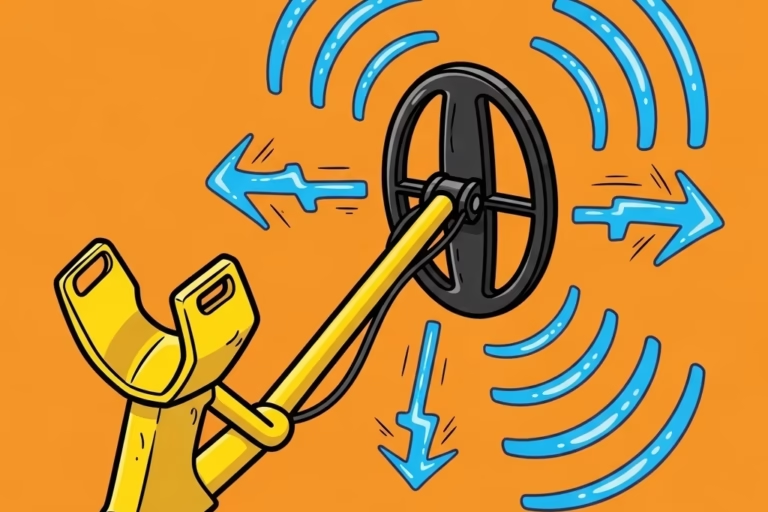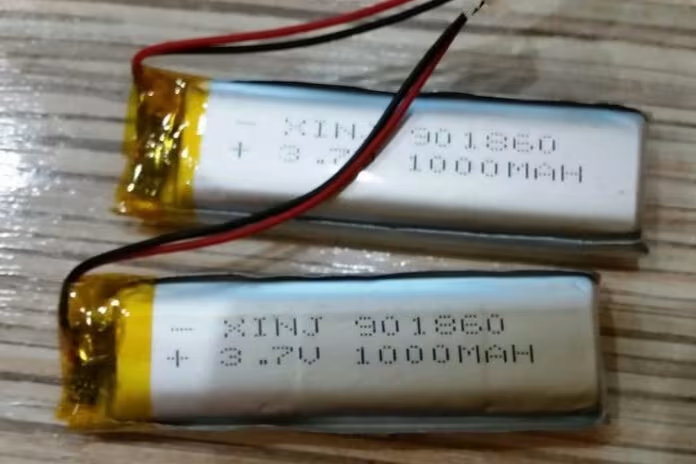When I first began my research with metal detection systems back in the early 2000s, single-frequency detectors were the rule. A few years later, if you wanted to find small nuggets of gold, you grabbed a high-frequency detector. Want to find deeper-buried relics? Get out a low-frequency unit. The thought of such a single detector doing both just didn’t seem real. Today, multi-frequency detection technology has turned this dream into reality and has transformed the face of searches for metallic objects in various applications.
The Frequency Factor
Think of the metal detector frequencies more as different colors of light: just as some colors penetrate fog better than others, different frequencies interact with metals and soil in distinct ways. Low frequencies can range from 3-7 kHz and are great for finding larger, more conductive targets at greater depths. High frequencies-often 15-30 kHz-shine at finding the little stuff and less conductive metals near the surface.
Single-frequency detectors force users to choose between these capabilities. It’s like having to choose whether you can see things up close or far away but never both at the same time. This is frustrating for many professions, including archeologists and security specialists.
The Multi-Frequency Revolution
The introduction of BBS technology marked a turn in the history of metal detection. Modern detectors now transmit and analyze more than one frequency simultaneously, gathering considerably more information on buried targets than their one-frequency ancestors could. But these aren’t just about more targets; they are also about knowing what one has found without digging.
I have had a chance to witness an experienced archaeologist conduct a multi-frequency detector survey of a Civil War battlefield. The device’s processing of the signal over multiple frequencies simultaneously enabled him to identify modern trash versus period artifacts with striking accuracy, thus saving hours and hours of unnecessary digging.
Technical Challenges and Solutions

The challenge in using multi-frequency detection does not lie in just broadcasting a number of frequencies at the same time but in the processing and interpretation of the complex return signals. FBS systems analyzing simultaneously frequencies from 1.5 kHz up to 100 kHz must have complex algorithms in order to analyze this returned data.
Ground balance, if not the most challenging area traditionally in metal detection, is further complicated by multiple frequencies because each frequency interacts differently with mineralized soil, creating a multi-dimensional puzzle for the detector’s processing system to solve. This is taken care of in modern detectors by sophisticated ground-tracking algorithms which constantly adjust the settings across all frequencies in real time. Practical Benefits Across Industries
The impact of multi-frequency detection extends much further than the realm of traditional treasure hunting. These systems can differentiate much better between harmless objects and potential threats during security screenings without having to sacrifice a high level of detection. Industrial quality control operations put multi-frequency systems to use in pinpointing different kinds of metal contamination along production lines with an unprecedented degree of accuracy.
In archaeological studies, multi-frequency detection has opened new perspectives in the non-invasive investigation of sites. By analyzing how different frequencies interact with buried objects, it enables the archaeologist to know what lies underground before embarking on excavations. This capability has been very valuable at historically sensitive sites where the disturbance of the ground should be as minimal as possible.
Real-World Performance Improvements

The advantages of multi-frequency detection become most pronounced in difficult environments. In highly mineralized soil, where single-frequency detectors often report a lot of false signals, multi-frequency systems can distinctly differentiate real targets from ground noise. Near salt water, where traditional detectors almost always behave badly, multi-frequency technology stays stable and true.
On a recent contract to survey a coastline, for example, I saw a multi-frequency detector sustain good performance on dry sand, in wet salt water, and everywhere in between, without local retuning. Earlier technology couldn’t dream of such flexibility.
The Future of Metal Detector Frequency
While looking into the future, the development in multi-frequency detections is endless. Advanced digital signal processing, combined with machine learning algorithms, will extend the boundary even more. Researchers are exploring systems that can dynamically adjust the frequency ranges depending on ground conditions and target responses, further improving the detection capability.
Integration of multifrequency technology with other sensing methods, such as ground penetrating radar and magnetic gradiometry, will provide even more complete subsurface images. Hybrid systems may achieve target identification and classification performance previously unattainable.
Conclusion
Going from single to multi-frequency detection, for me, is much more than a technical jump; it’s a conceptual shift in how we approach this challenge of finding and identifying metallic objects. Having worked with both technologies at length, the improvements in accuracy, depth, and discrimination capabilities are remarkable.
But perhaps the most exciting thing about multi-frequency is that we’re still only learning what we can do with it. As technology in the field continues to evolve, it opens up possibilities which weren’t even imagined a few short years ago. The future of metal detecting isn’t about finding the metal; it’s about understanding with greater clarity and confidence than ever what we’re finding.

My name is Paul and I am the founder of Detector For Metal, a dedicated resource for metal detecting enthusiasts seeking to uncover historical treasures and connect with the past using the latest technology. As a stay-at-home dad and family man, I’ve found metal detecting to be the perfect hobby that combines family adventure with historical learnings for the whole family.
As a father, I’m deeply committed to passing on this hobby to the next generation of detectorists, starting with my own children. I share advice on everything from metal detecting with kids to exploring the top 10 metal detecting sites you never thought about. My methodical approach to the hobby goes beyond the thrill of discovery—it’s about creating family traditions while preserving history and sharing the stories of those who came before us.


